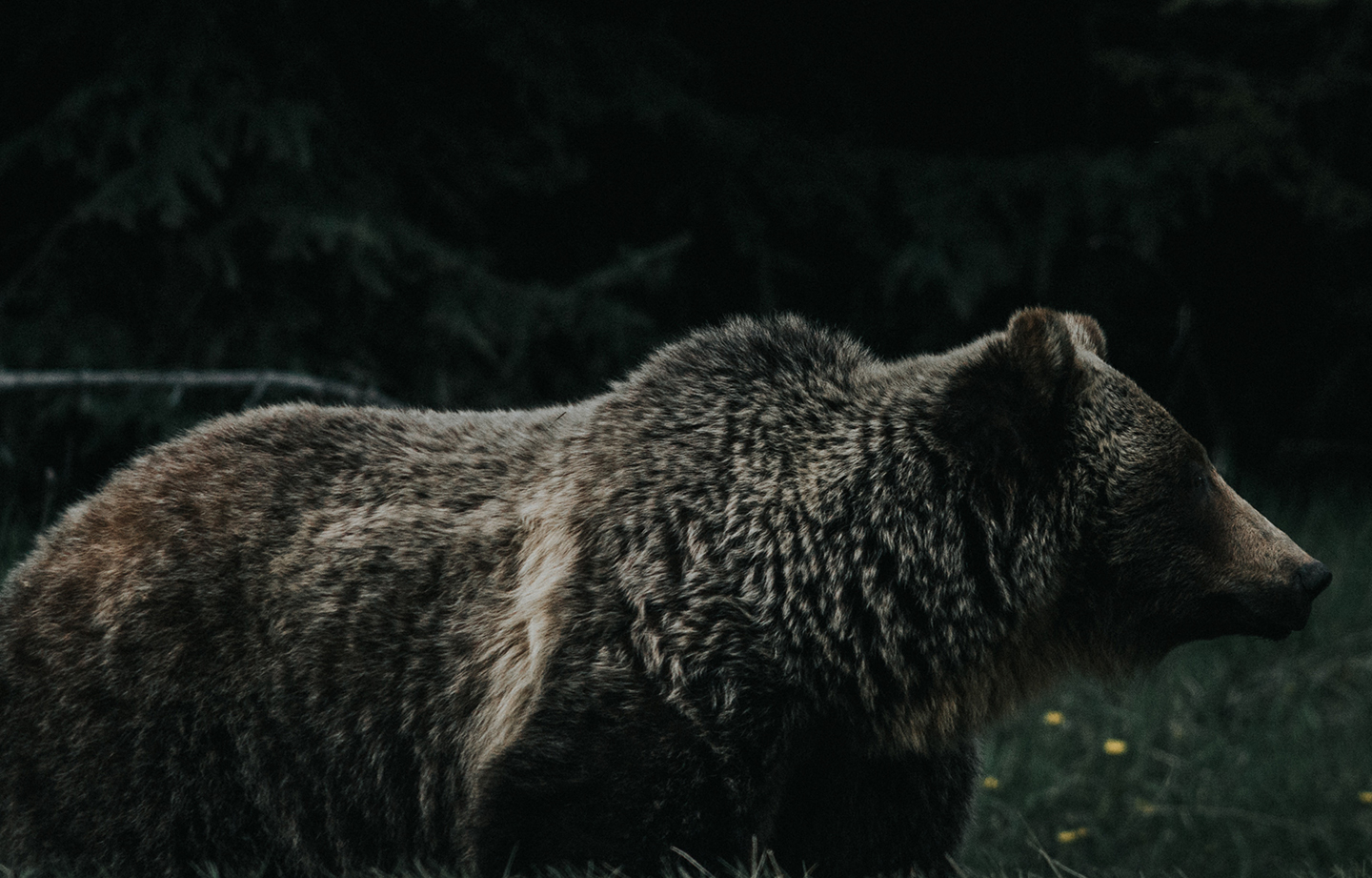
Bestiaries were traditionally works of observation and natural history. Ancient and widespread, their way of observing allowed room for elements of theology, symbolism, and moralizing that strike our modern ear as wildly unscientific. The animals in these old works were not seen in isolation, but in relation to the human sphere. They carried messages and lessons, and had a rightful place in a greater order.
Our own day has brought more detailed facts about animals and a less secure context for the new information. As we learn more about them, can the animals still teach us? We asked our contributors to listen to an animal which has always interested them. Their responses testify to the many levels of relationship which still endure. For the rest of the essays, click here.
–The Editors
Ursula is a Latin word, the female diminutive of the root urs–, bear. If it were translated into English as North American Indian names have generally been translated it would be “Little Bear Woman.” I have known this animal meaning of my name as long as I can remember. It is a queer thing to be named for an animal, and a queer animal to be named for. Among the stuffed animals whose characters, relationships, and politics occupied a good part of my childhood there were Teddy bears, but I never thought of them in connection with phic black one with a growl in his chest was named Bear. No desire to collect carved bears or wear bear jewelry or otherwise patronize my namesake ever occurred to me; and my only knowledge of the animal came from Ernest Thompson Seton’s fine, sad Life of a Grizzly, a horrific collection of hunts and maiming called True Bear Stories, and Kipling’s even more nightmarish Bear That Walks Like a Man, which is about Russia, not bears, but I did not know that. I preferred Bagheera to Baloo. I have never felt warmth or easy kinship towards bears, and do not enjoy seeing them in zoos and circuses. I do not find them funny or appealing. They are strange.
They may spend half the year in darkness, cold as the earth, the heart beating once a minute; and in the depth of that winter death the she-bear gives birth. They shamble when they walk. They are as if hidden inside the heavy, loose shag of their hide. Their feet are terrifying. The small eye looks impassively out from beside the heavy snout. It does not meet the human eye. The zoo bear is all patience and greed, pacing and hunching, standing up to catch the food thrown at it, swaying from foot to foot, the gaze not meeting ours. The performing bear of the circus is all patience and shame, the clown-monster made to lumber and cavort in clumsy imitation of human beings so that human beings can laugh at it.
I saw a wild bear once at a pool by a little waterfall in a creek in the Coast Range of Oregon. It was a Western black bear, not large as bears go, though large as wild animals go. It did not see or hear or smell us or our stupid excited puppy. It was a hundred yards away down a hillside of fir and fern, altogether remote, in its world in the other time, the bear time. By being there the bear allowed me to enter its time, to be there. This is the gift of the animal, for which we have no fit response but praise. It was fishing and playing in the running water, patient and dangerous, black and quick, in the noise of the water and the quick light. I have dreamed of the bear since. I am fortunate in my name, and would not be named for any creature I did not fear.♦
From Parabola Volume 8, No. 2, “Animals,”Summer 1983. This issue is available to purchase here. If you have enjoyed this piece, consider subscribing
